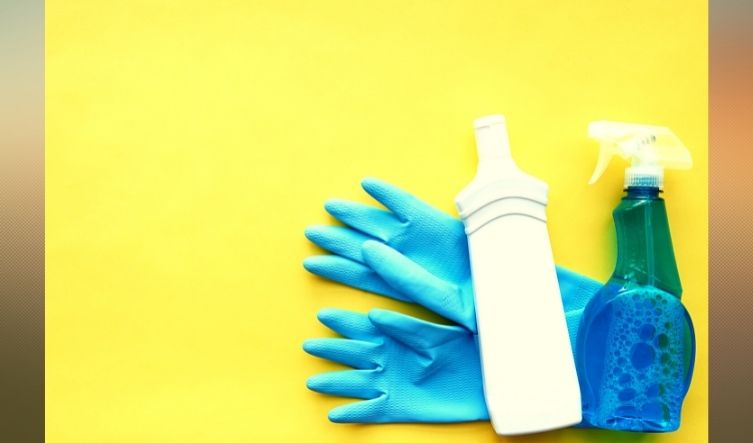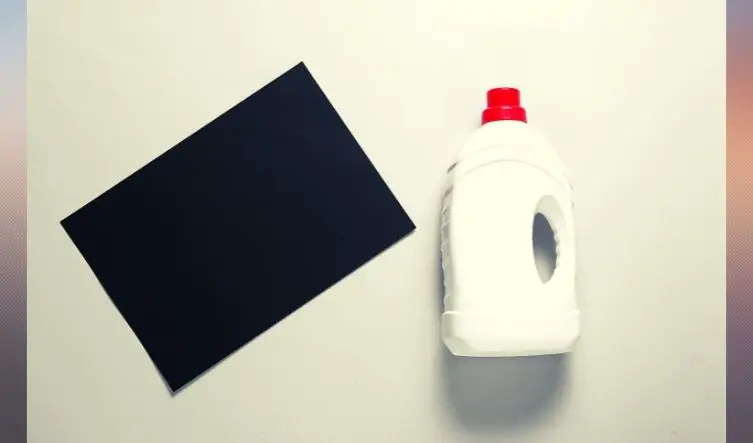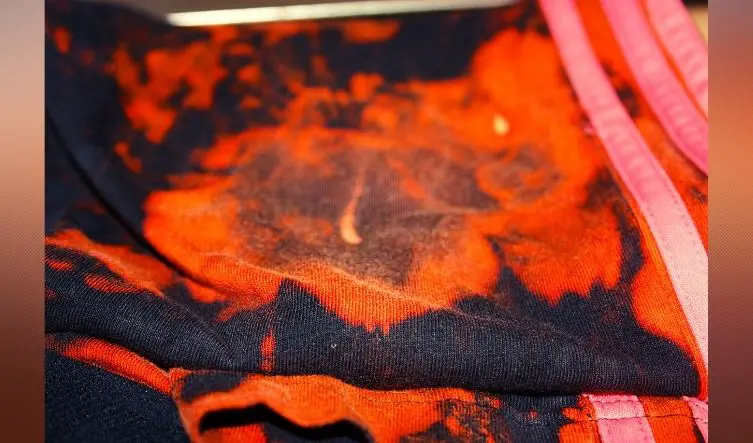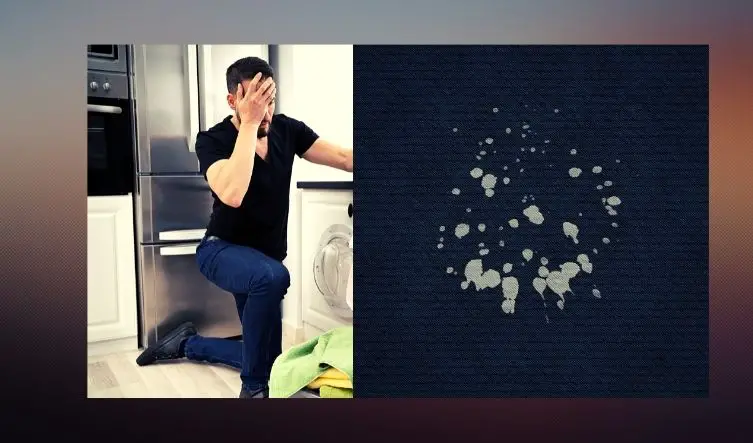Why Won’t my black shirt bleach?
Do you know that Bleaching black shirts, jeans, or other clothes is similar to doing a science experiment with an unexpected outcome?
After being bleached, a black article of clothing will sometimes turn practically white, but other times it will turn a streaky orange or even remain black. The type of cloth and the type of dye used on the black fabric have an impact on how much dye you can remove.
Why Won’t my black shirt bleach? Handling Bleach Safely

Mishandling bleach can be extremely dangerous to you and those around you. Only adults should use bleach on black clothing, and even then, they must take the necessary safety precautions. Bleach fumes can irritate the eyes and lungs, and bleach can burn the skin.
If possible, work with bleach outside. If you must complete this project indoors, pick a location where you will be able to open windows and use fans to provide ventilation. If there are any bleach splashes, wear safety glasses and long sleeves. When handling bleach, always use nitrile or rubber dishwashing gloves.
Why Won’t my black shirt bleach? Preparing For Bleach Black Clothes
Before exposing your black clothing to bleach, make sure you know what kind of fabric you have. Bleach should never be used on silk since it will cause the delicate threads to dissolve. Wool, suede, leather, and Spandex are also not bleachable.
After you’ve put on your protective gear, it’s time to make the bleach solution. Never use pure bleach on black clothing. It is quite potent and must first be diluted. Mix the bleach solution in a large plastic dishpan, bucket, or disposable foil dishpan—vessels you won’t mind if bleach and black color damage them. Begin by mixing 3 teaspoons of bleach with 1 gallon of water. Make just enough to cover the item of clothing you’re bleaching.
In a second dishpan, make a neutralizing solution with one part hydrogen peroxide and ten parts water. Soaking the item in this solution after it has reached your desired color will prevent the bleach from further whitening the fabric. (If you want your clothes to be as light as possible, you may omit this step.)
Why Won’t my black shirt bleach? Bleaching Black Clothes

Lower the black garment into the bleach solution while wearing your eyewear and gloves. Pull out the garment after five minutes, even if it hasn’t achieved your desired shade. Allowing the cloth to lie in the bleach for too long might cause it to discolor and weaken. Rinse the garment under running water after wringing off any excess liquid. (If you’re bleaching garments outside and bringing them inside to rinse them, transfer them to a second dishpan or a plastic bag to prevent the bleach solution from spilling into your home.)
Because one five-minute soak may not be enough to remove black dye off clothing, you’ll most likely need to repeat the technique at least once more, if not multiple times. If you’re still having trouble, try adding more bleach to the mix. Using up to 3/4 cup of bleach per gallon of water is safe.
After each five-minute soak, rinse the item. Allow the bleached clothing to soak in the neutralizing solution for a few minutes once you’re happy with the color. Rinse once more, then wash the bleached clothing in the washing machine by itself and air dry.
Why Won’t my black shirt bleach? Designing Black Clothes with Bleach

Perhaps your goal is to add a unique design to the fabric rather than turn black items into completely different colors. On dark garments, bleach can be used to create a tie-dye, ombre, or random effect. Bleaching black shirts with a design is similar to bleaching them all over. Use the same safety precautions and bleach solution as before.
Submerge only a portion of the clothing in the bleach to create an ombre effect. Pull more and more of the garment out of the solution as the color begins to change, creating a progressive bleach effect that ranges from mild to intense. Making a random design on black clothing is considerably easier. Fill a spray bottle or squeeze bottle halfway with the bleach solution. Spray or squeeze the bleach solution over the fabric using a garbage bag or an old towel.
The final few stages are the same regardless of how you embellish black clothes with bleach. To stop the bleaching process, soak the garments in the neutralizing solution. Finally, rinse the cloth before washing it by itself in the washing machine and air drying it. Pour any remaining bleach solution down the drain slowly, followed by plenty of water. To guarantee that the bleach does not react with anything in your pipes, make sure no other cleaning products or chemicals have recently been poured down the drain.
Bleach Stains on Black Clothes: How to Remove Them

Bleach stains can be removed from clothing, but when the fabric is black or dark, the results aren’t always satisfactory. The bleach must be dealt with as soon as possible. Sodium thiosulfate neutralizes the bleaching action, but it may not work on dark garments or an old stain. It will, however, prevent the bleach from further removing the fabric’s pigment. Bleached black fabric may turn green or brown before turning white. Another option is to just conceal the bleach stain. Follow the cleaning instructions first to ensure a successful dye job. It will get rid of any excess bleach and keep the newly applied pigment from reacting.
What you’ll require?
• 1 tablespoon sodium thiosulfate
• 1 cup boiling water
• A disposable plastic bowl or container
• A cloth or a towel
• Laundry detergent
• Clothing dyeing
Cleaning
Step 1
Fill a plastic basin or container halfway with warm water. Sodium thiosulfate (one tablespoon)
Step 2
Using the mixture, saturate the cloth. Blot the blemish.
Step 3
Apply the mixture to the fabric until it is entirely absorbed.
Step 4
If the bleach continues to transfer to the cloth, repeat the process.
Step 5
Clean the garment as directed on the care label. Dyeing the clothing is an option if the bleach stain has not faded.
Covering
Step 1
Apply a color remover to the entire garment. This prevents the bleached area from creating a bright spot.
Step 2
Follow the package’s instructions for dying the item.
Step 3
To reduce bleeding, wash the garment after dyeing it.
Why Won’t my black shirt bleach? Tip:
Applying dye exclusively to the afflicted area is an alternative, but the color may be deeper than the rest of the clothing. To remove the bleach, you’ll need to use a color stripper or sodium thiosulfate. Pool supply and photographic stores carry sodium thiosulfate. It’s used in film development and to neutralize the effects of chlorine bleach. Bleach Stop is a brand name for a product.
FAQs: WHY WON’T MY BLACK SHIRT BLEACH
Why will my black shirt not bleach?
Black shirts often don’t bleach well due to the strong, dark dye that black fabric is treated with. The bleach may struggle to remove or lighten the black color, leaving the shirt with uneven or splotchy results, and it’s typically more effective on lighter-colored fabrics.
What color does a black shirt turn when bleached?
When a black shirt is bleached, it usually turns various shades of brown or orange due to the removal of the black dye. The specific color it turns can vary depending on factors such as the type of bleach used, the fabric composition, and the duration of exposure to the bleach.
Why is my black shirt bleaching orange?
A black shirt may bleach orange when it contains a particular type of dye called vat dye. Vat dyes are used in some black fabrics, and when exposed to bleach, they can react by turning orange or brown, rather than completely fading to white as with other dyes.
How long does it take for bleach to turn something white?
The time it takes for bleach to turn something white depends on several factors, including the strength and concentration of the bleach, the type of fabric, and the darkness of the original color. In many cases, bleach can start to lighten a colored fabric in just a few minutes, but achieving a true white color may take longer and could require multiple applications and rinses.
Conclusion: WHY WON’T MY BLACK SHIRT BLEACH
Why Won’t my black shirt bleach? In conclusion, the challenge of bleaching a black shirt lies in the stubbornness of the dark dyes used to achieve its color. These dyes can resist the bleaching process, resulting in various shades of brown or orange rather than a pristine white. It’s important to understand that achieving a successful bleach outcome on black garments can be unpredictable, and the results may vary depending on the fabric and dye type, so patience and experimentation are key when attempting to lighten black clothing.
Watch: Making CUSTOM SHIRTS with Bleach
Read more:
Can you tie dye a black shirt?
HOW TO REMOVE SUBLIMATION INK FROM A SHIRT?




